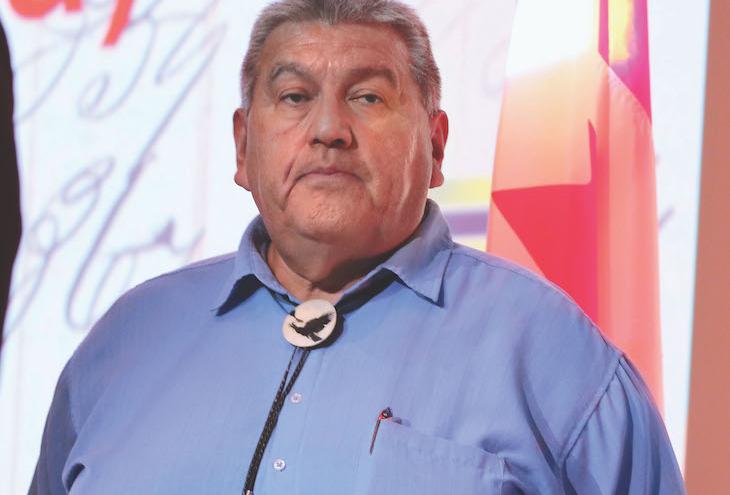Three words. The question Oneida High School Principal Artley Skenandore asks his students has just three words: “What’s your goal?” When new teens come to his school, he puts his question to each of them. If one replies, “I don’t have one” or “My goal is to graduate,” Skenandore says his usual comeback is “We’re going to work on that because that’s not a goal. That’s a stop along the way.”
“Everybody has to have a goal,” he explains. “The goal can change. It can be adjusted, but it starts with understanding that you have to have a goal, because that’s your compass into the future. With that compass, you can make a lot of adjustments. There are different roads you can take to get there, but that compass is going to be out in front of you.”
Without hesitation Skenandore describes himself as “pushy,” especially when the success of his 138 students is at stake. He has more than 30 years of experience as a teacher and principal in the Oneida Nation near Green Bay, Wis.
Skenandore, who earned his EdD in First Nations education earlier this year from the University of Wisconsin–Green Bay, has been involved in AISES since the 1980s and is a member of the Council of Elders. To him, AISES brings “the strong, good minds of our world together to make our tribal nation world, and the world in general, better. That strength of mind and spirit will make that fire of our tribal nations brighter.”
Skenandore practices what he preaches. As an educator, he has set three goals for himself. First, he strives to make his students proud of their Oneida heritage. This foundation gives them the confidence to achieve objectives for themselves, their families, and their communities. “You lead with your identity. You have to be comfortable with who you are,” says Skenandore. “If you have that confidence with your Indigenous identity, you can stand anywhere in the world.”
His father was the nation’s first Native sheriff in the 1950s, and he also takes inspiration from the example of his mentors: a pair of brother and sister lexicographers who worked on the Oneida language dictionary until they were both in their 90s.
As principal his second goal is to build an environment that supports students in their quest to learn how to learn. Both of these goals combine to create the third goal: learning “to do,” whether it’s going to college or learning a trade.
Two weekly school meetings — the kanehelatuksla (thanksgivings) — reinforce Skenandore’s three-part intention. Every Monday at 7:55 a.m. and every Friday at 2:55 p.m. students gather in the cafeteria for 15-minute sessions to express gratitude for what they have and to set their minds on their goals. “On Mondays we reflect on our place in creation, and on Fridays we bundle all our thoughts and achievements for the week and give thanks for what we’ve accomplished,” he explains.
If students need another reminder to stay focused on achievement, all they have to do is look across the street to see the Oneida Nation’s elementary school. It’s built in the shape of a turtle with wampum belts decorating its curving outer walls. This massive one-story 1980s-era building comes complete with head, legs, and a tail and pays homage to Oneida cosmology in which the Earth is Great Turtle Island.
The elementary school reminds everyone on the 65,000-acre reservation — and everyone who returns home there — of their tribal sovereignty. “It’s a monument to our identity,” says Skenandore.













